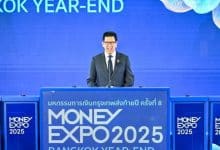Penny-pinching plans: Finance ministry’s welfare budget shuffle in the works

In an attempt to ease the strain on government spending, the Ministry of Finance is contemplating new measures regarding the allocation of the public welfare budget, an anonymous source from the finance ministry disclosed.
This primarily pertains to the bracket of public welfare budget expenditure which, the source identifies, consists of redundant items that do not necessarily correlate with the section of the population who are most in need of welfare payments.
One glaring example of this mismatch surrounds the old age allowance (OAA) scheme which currently pays progressive rates ranging from 600 to 1,000 baht monthly, relative to the age of the beneficiary. For instance, individuals aged between 60 to 69 are allotted 600 baht, those aged 70 to 79 get 700 baht, those aged 80 to 89 are granted 800 baht, and those aged 90 and above receive 1,000 baht each month.
As it stands, approximately 11 million people benefit from the OAA, which utilises an annual budget circulating around 80 billion baht. Alternatively, should the OAA be confined to only the low-income elderly sector, or individuals who hold a state welfare card with an annual income not exceeding 100,000 baht, the number of OAA recipients would be reduced to 5 million. This would in turn halve the state budget to 40 billion baht, according to the source.
However, the source cites numerous instances where governments have strategically targeted segments of the population deemed most suitable for state welfare after such countries were prompted to inject substantial amounts of money to revive their economy and society following the pandemic.
For example, the proposal of a 3,000 baht monthly OAA for state welfare cardholders would necessitate an annual budget of just 180 billion baht. Yet, if this disbursement was spread across all aged 60 and above, the figure would rise to 500 billion baht, reported Bangkok Post.
This targeted approach, the source suggests, would permit the government to inflate the welfare budget, thereby increasing the OAA per person, without causing substantial strain on the state budget. Moreover, the possible decrease in certain superfluous state welfare provisions could lead to further savings. Limiting financial aid and other relief schemes to solely those with a state welfare card would create a considerable reduction in government spending, for example.
Considering economic projections, Thailand’s economy is forecasted to persist on its upwards trajectory in the aftermath of the pandemic, expanding by approximately 3.6% this year.
As such, the future of fiscal policy is ignited with a newfound focus on fiscal strength, entailing an increment in revenue collection and a reduction in unnecessary expenditure. Cutting back on superfluous expenditures and seeking targeted fiscal policies are included within these welfare budget measures.
Latest Thailand News
Follow The Thaiger on Google News:


























